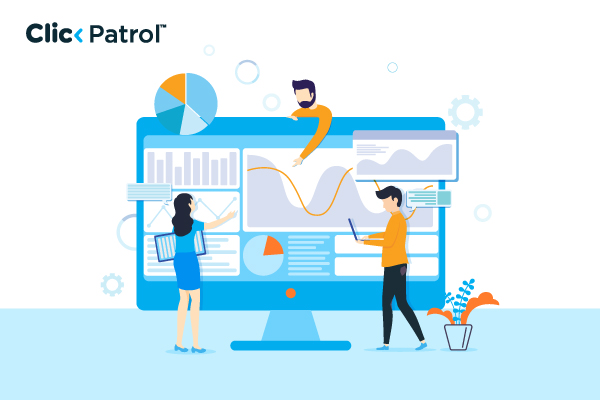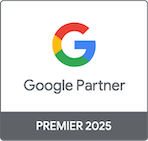It refers to clicks or impressions from users or placements unrelated to your campaign goals or audience.
How to develop a strategy to minimize irrelevant ad traffic across campaigns
Abisola Tanzako | Nov 07, 2025

Table of Contents
- What is irrelevant ad traffic?
- Why irrelevant ad traffic happens
- 7 Steps to reduce irrelevant ad traffic
- Step 1: Audit your traffic and placements
- Step 2: Narrow down audience targeting
- Step 3: Refine and filter out bad placements
- Step 4: Adopt contextual and brand safety controls
- Step 5: Optimize for quality metrics and not volume
- Step 6: Use automation wisely
- Step 7: Monitoring and adaptation
- The role of ClickPatrol in minimizing irrelevant ad traffic
- Case study: How ClickPatrol helped Conservio minimize irrelevant ad traffic by 14%
- Take control of your ad traffic before it controls your budget
Some studies suggest that nearly 47.4% of all internet traffic is bot-generated, and irrelevant ad traffic can make up a large portion of a company’s ad clicks.
Online advertising is all about accuracy: delivering to the right audience at the right moment with the right message. And most advertisers fall victim to irrelevant ad traffic that burns budget and distorts performance metrics.
When ads are shown on low-quality or irrelevant placements, they attract unqualified clicks and damage ROI. This article explains how to build a data-driven solution to combat irrelevant ad traffic, and how ClickPatrol helps by filtering out low-quality placements and displaying ads only on high-quality, content-relevant sites.
What is irrelevant ad traffic?
Irrelevant ad traffic refers to traffic, clicks, or impressions from users or placements that are not relevant to your campaign target audience or business goals. This can happen for several reasons:
- Poor placement targeting: Your ad appears on a site, video, or app that has no relation to your niche.
- Low-quality traffic sources: Exchanges or networks that are comprised of spammy or bot-driven sites.
- Contextual mismatches: Ads that are placed alongside content that isn’t relevant to your offer or message.
- Accidental clicks: Terrible ad placement or intrusive formats that encourage unintentional interaction.
Why irrelevant ad traffic happens
Even the best-planned campaigns can have irrelevant Ad traffic due to the complexity of ad delivery systems. Some of the reasons for this are:
- Broad targeting parameters: Targeting a too-wide audience increases the likelihood that your advertisement will be shown to people who have little or no interest in your product.
- Poorly curated placement lists: Certain ad networks will automatically put your ads on thousands of sites, apps, or videos without any control or transparency.
- Insufficient negative placements or exclusions: Not regularly excluding poor-performing or irrelevant placements means bad sources keep taking your budget.
- Automated algorithms gone wrong: Automated algorithms in ad platforms have the risk of getting overly fixated on inexpensive impressions or clicks and then generating low-quality traffic.
- Bots and click fraud: Fake or automated traffic sources may mimic behavior but introduce no value.
7 Steps to reduce irrelevant ad traffic
The steps to reduce irrelevant ad traffic include:
Step 1: Audit your traffic and placements
- Carry out a thorough analysis of campaign performance to identify causes of irrelevant traffic.
- Examine placement performance reports: Impressions, clicks, and conversions per site or domain.
- Assess interaction metrics: A high bounce rate or low time on site indicates the site is not relevant.
- Check conversion paths to identify placements that never lead to meaningful results.
- Examine geographic and device information of abnormalities (e.g., traffic related to irrelevant areas or unfamiliar mobile applications).
Step 2: Narrow down audience targeting
- Targeting by demographics to your dream customers.
- Create custom intent audiences based on user behaviour, search behaviour, or site visits.
- Include first-party data: CRM lists, website visitors, and customer match audiences.
- Filter irrelevant parts so that advertisements will not reach the wrong filters.
Step 3: Refine and filter out bad placements
- Periodically go through placement reports to identify sites or apps with high spend and low engagement.
- Use content category exclusions to prevent anything non-brand-safe (e.g., gambling, politics, mature content).
- Block suspicious or irrelevant domains to prevent wasted impressions.
- Develop an allowlist of trusted, contextually relevant sites to focus your spend.
- Automate exclusion with ClickPatrol, which identifies and removes low-quality or irrelevant placements, ensuring ads appear only on reputable sites.
Step 4: Adopt contextual and brand safety controls
- Implement contextual targeting to ensure the ads align with relevant content.
- Allow brand safety filters to block fake news, hate speech, and unsafe placements.
- Apply the key exclusion criterion to prevent triggers that could lead to irrelevant placements.
- Automate brand safety and contextual alignment with the help of algorithms provided by ClickPatrol.
Step 5: Optimize for quality metrics and not volume
Optimize on quality KPIs as opposed to vanity metrics. Prioritize metrics like:
- Conversion rate
- Time on site, pages per session.
- Cost per qualified lead (CPQL)
- Watchable impressions and completion rate (video ads).
- Filter placements that skew data and gain the right performance insights with ClickPatrol.
Step 6: Use automation wisely
- Establish specific conversion targets to help algorithms understand what high-quality traffic looks like.
- Monitor performance at the learning stage to identify inefficiencies early.
- Integrate automation and human control, and third-party validation services such as ClickPatrol.
- Use the ClickPatrol real-time exclusion engine to eliminate bad placements in real-time, so that automation generates quality performance.
Step 7: Monitoring and adaptation
- Conduct regular audits (once a week or bi-weekly) to identify new sources of irrelevant traffic.
- Monitor after-sale traffic activity-when traffic is poor, it is usually indicated by low activity.
- Introduction of new placements should be on a small budget.
- Keep abreast with new low-quality websites and changing trends of ad networks.
- Visually monitor placement performance with the use of ClickPatrol monitoring and reporting tools.
The role of ClickPatrol in minimizing irrelevant ad traffic
The role of ClickPatrol in minimizing irrelevant ad traffic includes:
- Auto recognition and prevention of irrelevant placements.
- Ads should only be placed in trusted, brand-safe websites.
- Prevent wasted spend from non-converting or fraudulent clicks
- Understand further the placement performance between campaigns.
To the performance-oriented marketer, ClickPatrol is a live-time quality filtering system – it allows you to concentrate your investment in what really works.
Case study: How ClickPatrol helped Conservio minimize irrelevant ad traffic by 14%
Conservio, a nature-positive travel company, struggled with high ad spend and low conversions. Suspecting competitor activity and bot interference, they tested a PPC protection tool for two weeks.
The tool detected 14% non-human traffic, resulting in a 17% reduction in campaign costs, a 14% increase in cleaner traffic, and a noticeable boost in ROI from higher conversions in the first month.
Take control of your ad traffic before it controls your budget
Accuracy is not a decision in the current ever-evolving digital ad ecosystem; it is a requirement.
Irrelevant ad traffic not only wastes ad spend, but it waters down your campaign performance, distorts your metrics, and harms your brand reputation.
The solution is simple: consistent optimization, smarter targeting, and the right tech partner that keeps your ads where they belong, in front of real, relevant people on quality sites.
With ClickPatrol, you can finally take back control. Its sophisticated exclusion engine systematically removes poor-quality placements and junk traffic from your campaigns, preventing wasted impressions and making each impression count.
Stop losing dollars to irrelevant ad traffic. Sign up for ClickPatrol and protect your campaigns today.
Frequently Asked Questions
-
What is irrelevant ad traffic?
-
Why is irrelevant ad traffic a problem?
It wastes ad spend, lowers ROI, and can harm brand reputation.
-
How can I reduce irrelevant ad traffic?
Refine targeting, exclude poor-performing placements, and focus on quality metrics such as conversions and engagement.
-
Can ClickPatrol work with my existing campaigns?
Yes. It integrates easily and automatically filters out low-quality placements in real time.
-
What is the difference between click fraud protection and irrelevant ad traffic filtering?
Click fraud blocks bots, while irrelevant traffic filtering, like ClickPatrol’s, prevents poor or unrelated ad placements.






